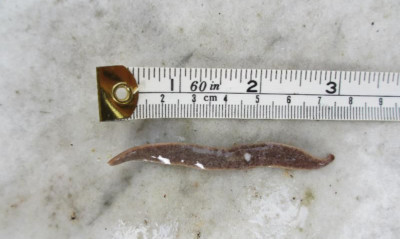Perthshire gardens are under threat from killer worms that are devouring the gardener’s best friend.
A Rattray woman has destroyed more than 3,000 flatworms since May last year, a haul that has been described by a soil scientist as the largest infestation he has ever heard of. Experts warn there is no known way to eradicate the flatworm, which preys on the earthworm.
Louise Garthwaite, of Ashgrove Road, said: “I want to draw attention to the potential scourge of New Zealand flatworms, which are predators of the ‘gardener’s best friend’ in Blairgowrie and Rattray, and probably elsewhere in Courier Country.
“This invader has attacked earthworms to the extent that some gardens locally have lost their useful presence.
“Since May 2014, I have captured and destroyed more than 3,000 New Zealand flatworms in a border in my garden.
“Apparently, they are quite well established in this area. It seems to me that people ought to pay a bit more attention to the fact that earthworms are very important to the environment.”
Retired research associate Dr Brian Boag, of the James Hutton Institute, said there is a predator-prey relationship between flatworms and earthworms.
He said: “This is probably the highest infestation I have heard of. I would be interested to know what impact that’s going to have on wildlife.
“Invasive species such as Japanese Knotweed can be controlled, although it’s costly, whereas New Zealand flatworms have no known control at all.”
Dr Boag added: “They’re spreading all the time. The only thing we can do is try to slow down the spread by telling everybody about them as much as we can. I’d like to see an advertising campaign to inform people.
“If anybody does have New Zealand flatworms in their garden then, if they are passing anything on to neighbours, relatives or friends, they should be either bare-rooted plants or seeds or cuttings.
“Giving containerised plants that might have flatworm would just spread the detrimental impact that the flatworm has on wildlife even further.”
Report sightings to Dr Boag at the James Hutton Institute, Invergowrie, DD2 5D or Brian.Boag@hutton.ac.uk.
